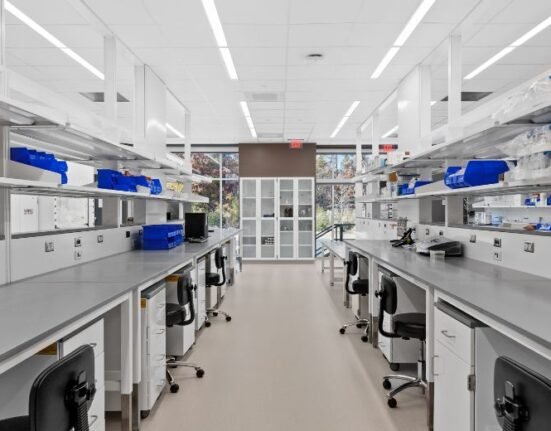HQ Team
August 6, 2024: A family of antimicrobial compounds can neutralise necrotising fasciitis, a deadly bacterial skin infection that is also known as flesh-eating disease, when tested in mice, according to researchers at the Washington University School of Medicine in St. Louis.
The compound, named compound named GmPcides, targets gram-positive bacteria, which can cause drug-resistant staph infections, toxic shock syndrome and other illnesses, according to a university statement. It’s based on a type of molecule called ring-fused 2-pyridone.
It was developed through a collaboration between the Washington University labs of Scott Hultgren, PhD, the Helen L. Stoever Professor of Molecular Microbiology, and Michael Caparon, PhD, a professor of molecular microbiology, and Fredrik Almqvist, a professor of chemistry at the University of Umeå in Sweden.
“All of the gram-positive bacteria that we’ve tested have been susceptible to that compound. That includes enterococci, streptococci, staphylococci, and C.difficile, which are the major pathogenic bacteria types,” said Caparon, the co-senior author. “The compounds have broad-spectrum activity against numerous bacteria.”
The best known of these, necrotizing fasciitis or “flesh-eating disease,” can quickly damage tissue severely enough to require limb amputation to control its spread. About 20% of patients with flesh-eating disease die, usually within 48 hours of the onset of symptoms, according to the statement.
Weak immune system
Flesh-eating disease occurs when bacteria enter the body through a break in the skin. People with a weakened immune system can be at greater risk of developing this condition.
The condition spreads quickly, with symptoms including blisters, fever, fatigue, and pain, as well as skin changes worse than what one would expect based on the wound’s appearance.
The study focused on one pathogen, streptococcus pyogenes, which is responsible for 500,000 deaths every year globally, including flesh-eating disease.
“Mice infected with the pathogen and treated with a GmPcide fared better than untreated animals in almost every metric. They had less weight loss, the ulcers characteristic of the infection were smaller, and they fought off the infection faster,” according to the statement.
“The compound appeared to reduce the virulence of the bacteria and, remarkably, speed up postinfection healing of the damaged areas of the skin.” Microscopic examination revealed that the treatment appears to have a significant effect on bacterial cell membranes, which are the outer wrapping of the microbes.
In addition to their antibacterial effectiveness, GmPcides appear to be less likely to lead to drug-resistant strains, according to the statement.
Clindamycin resistance
Tissue damage affects the efficiency of antibiotics to kill streptococcus pyogenes. Treatment strategies for necrotizing disease often include an antibiotic that inhibits the expression of tissue-damaging toxins in combination with an antibiotic that targets bacterial growth.
The latter typically includes a β-lactam (piperacillin/tazobactam), while the former includes clindamycin, which at sublethal concentrations in vitro inhibits the expression of several tissue-damaging toxins. The use of clindamycin is now threatened by increasing rates of resistance in healthcare settings.
Earlier, the authors showed that GmPcides can wipe out bacteria strains in petri dish experiments.
In their latest study, published in Science Advances, they decided to test it on necrotizing soft-tissue infections, which are fast-spreading infections usually involving multiple types of gram-positive bacteria, for which Caparon already had a working mouse model.
Caparon, Hultgren and Almqvist have patented the compound used in the study and licensed it to a company, QureTech Bio, in which they have an ownership stake. They expect that they will be able to collaborate with the company that can manage the pharmaceutical development and clinical trials to potentially bring GmPcides to market.
Blue colour under a microscope
Gram-positive bacteria are bacteria classified by the colour they turn in the staining method. The method uses crystal violet dye, which is retained by the thick peptidoglycan cell wall found in gram-positive organisms. This reaction gives gram-positive organisms a blue colour when viewed under a microscope.
Although gram-negative organisms classically have an outer membrane, they have a thinner peptidoglycan layer, which does not hold the blue dye used in the initial dying process. Other information used to differentiate bacteria is the shape. Gram-positive bacteria comprise cocci, bacilli, or branching filaments.
“One of the jobs of a membrane is to exclude material from the outside,” said study co-author and professor of molecular microbiology,” said Caparon. “We know that within five to ten minutes of treatment with GmPcide, the membranes start to become permeable and allow things that normally should be excluded to enter into the bacteria, which suggests that those membranes have been damaged.”
This can disrupt the bacteria’s functions, including those that cause damage to their host, and make the bacteria less effective at combating the host’s immune response to infections, according to the statement.
The World Health Organization (WHO) estimates that necrotising fasciitis occurs in 1.69–15.5 cases per 100,000 people per year worldwide.
This number is likely lower than the actual number of cases due to underreporting. In the US, the incidence is estimated to be 0.4 cases per 100,000 people per year, while in the Netherlands it’s estimated to be 1.1–1.4 cases per 100,000 person-years.








